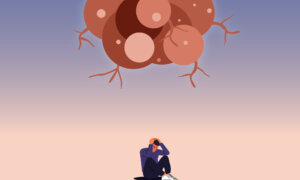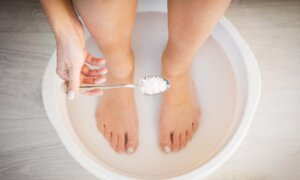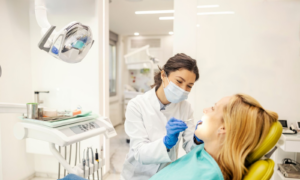Many people dye their hair for aesthetic reasons, with some opting for natural hair dyes to reduce the risk of allergies. However, are natural hair dyes truly safe, and do chemical hair dyes increase the risk of cancer?
Dr. Yishan Tsai, director of the Dermatology Department at Yes Clinic in Taiwan and a dermatologist, dyes her hair. However, she emphasized on the “Health 1+1” program that one can minimize health risks by adopting the correct hair dyeing methods.
Are Natural Hair Dyes Always Safe?
Some people choose natural hair dyes to minimize allergy risks. However, Dr. Tsai pointed out that natural options are not always safe. Recently, she treated a 50-year-old woman who wanted to dye her hair due to graying. Believing natural options were safer, she opted for henna hair dye. Shortly after the treatment, however, she developed an allergic reaction on her scalp—showing redness, swelling, itching, and even blisters.
Dr. Tsai noted that henna is commonly used in India for temporary tattoos as well as for coloring hair. However, it can also cause allergic reactions in some people. Similarly, other natural dyes like kombu, coffee leaves, and polygonum multiflorum are not without risks.
Are Dark Hair Dyes More Damaging?
There is a common misconception online that darker hair dyes are more damaging. Dr. Tsai disagrees with this notion, explaining that hair dyes can be categorized into three categories: temporary, semi-permanent, and permanent. Permanent dyes often contain ingredients such as
paraphenylenediamine, resulting in darker colors and potentially causing the
most damage.
Temporary dyes, like styling sprays, remain on the hair’s surface and wash out easily, causing minimal damage. Semi-permanent dyes typically last about a month and gradually fade after five to six washes, though their pigments remain in the hair cortex.
For colors like purple or orange, the dyeing process can be quite damaging. Dr. Tsai explained that individuals with dark hair seeking lighter shades must first use hydrogen peroxide to remove melanin. If the new color is similar to the original, the lightening process does not need to be extensive.
However, for those with black hair aiming for blonde or lighter shades, extensive bleaching with hydrogen peroxide is necessary. This process can harm the scalp and hair quality, leading to an accumulation of chemical damage. Moreover, accidental contact with bleach can cause scalp burns and potentially result in hair loss. Regularly changing hair colors or lightening hair can significantly compromise the quality of hair.
Dr. Tsai had an 18-year-old male patient who was a trainee at an entertainment company. Due to the nature of his job, he needed to bleach his black hair to a very light purple color. During the bleaching process, the assistant may have overlooked the timing or the condition of his hair, resulting in a chemical burn that caused a bald spot, which was very distressing for him. Fortunately, after diagnosis, the doctor determined that the damage was not permanent.
Do Hair Dyes Increase Cancer Risk?
Research has found that using permanent hair dyes may increase the risk of
ovarian,
breast, and skin cancers in women.
A 2020 study by Harvard Medical School, published in the BMJ, analyzed survey data from 110,000 female nurses. It showed that while the overall risk of most cancers did not increase among those who had used permanent hair dyes, the risk of developing breast cancer, ovarian cancer, and basal cell carcinoma (a type of skin cancer) was higher.
7 Precautions for Safe Hair Coloring
Dr. Tsai believes dyeing your hair occasionally will not cause cancer. The key is to understand the basic precautions when using hair dyes:
1. Perform an allergy test before dyeing.
Apply a small amount of dye behind your ear or on the inside of your wrist. After 30 minutes, check for any redness, itching, or blisters. Check again after two days. If any allergic reaction occurs, do not use the product.
2. Avoid products labeled in foreign languages, as they may lack proper government regulation.
3. Follow the product instructions when dyeing your hair, especially the recommended application time.
Dr. Tsai mentioned a patient who left a hair dye on for two hours instead of the suggested 15 minutes, resulting in redness and swelling of the scalp.
4. If you experience any discomfort during the dyeing process, such as stinging that persists for more than five minutes or increases in intensity, immediately inform your hairstylist or stop the dyeing process.
5. You can apply Vaseline around the scalp to protect the more delicate skin or use a scalp protector to prevent the dye from touching the scalp.
6. Limit hair dyeing to no more than four times a year. To minimize dye usage, dye your hair every three months and use touch-up methods instead of dyeing the entire head each time.
7. Drink plenty of water after dyeing your hair, aiming for at least 16 ounces, to help flush out any absorbed dye from your body.
Scalp Conditions Unsuitable for Hair Dye
- Open wounds, such as scratches
- Eczema, redness, folliculitis, or blisters
- Severe dandruff or significant redness and itching
Dr. Tsai suggests waiting until the scalp is in good health before dyeing hair. She also stated that adolescents under 18, whose bodies are still developing, should avoid hair dyeing if possible.













